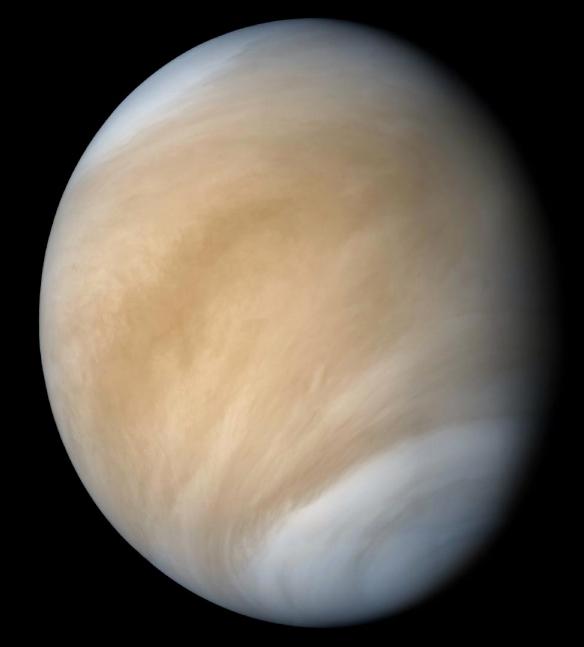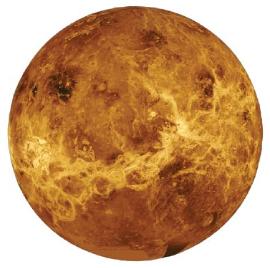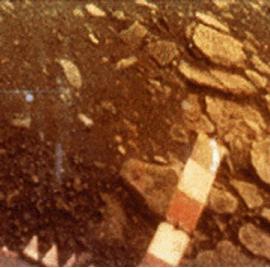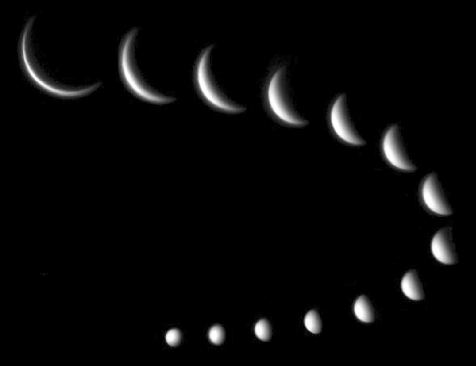THE PLANET VENUS
One cold, moonless, winter night in Milwaukee, I went outside to look at the stars. Snow covered the back yard and Venus was high and bright. Something that night seemed different. I noticed the shadows of the lilac branches, plainly visible on the snow. Venus was casting shadows!
Venus has the distinction of being the brightest Planet in our sky, reaching magnitude –4.6. It is often referred to as the morning or evening star because it hugs close to the Sun’s rising and setting. Since Venus orbits inside Earth’s orbit, it also cycles through phases.
In the past, Venus was referred to as Earth’s sister Planet because the diameters of the two Planets are almost the same. This connotation vanished when we discovered that Venus is totally inhospitable to life; so much so, that even scientific probes can last only several minutes on its surface. Its atmosphere is 96% carbon dioxide with temperatures soaring over 900° F. This temperature is more than hot enough to melt lead, zinc or tin. Its atmospheric pressure is 90 times Earth’s, equivalent to water pressure at 3,000 feet below sea level. Venus’ day is longer than its year, and in comparison to all the other Planets, it rotates on its axis almost upside down.
Locating and Observing Venus
Venus is very easy to find in the sky because of its brightness and close proximity to the rising or setting Sun. Reaching magnitude –4.6, Venus easily outshines all the other stars and Planets. If you see a very bright star lower in the sky during the early morning or night, it will almost always be Venus. When Venus is shining it brightest, it can seem eerily bright.
With a small telescope and moderate magnifications of 50x to 100x, Venus appears brilliantly white and featureless because of its thick cloud cover. Since this Planet is inside Earth’s orbit, it cycles through phases just like the Moon. However, unlike the Moon, it varies in size. Venus is at its largest and brightest when a crescent. The crescent phase of Venus can be seen in well-focused binoculars.
|





